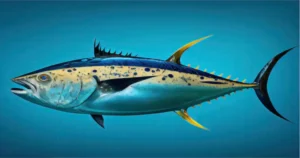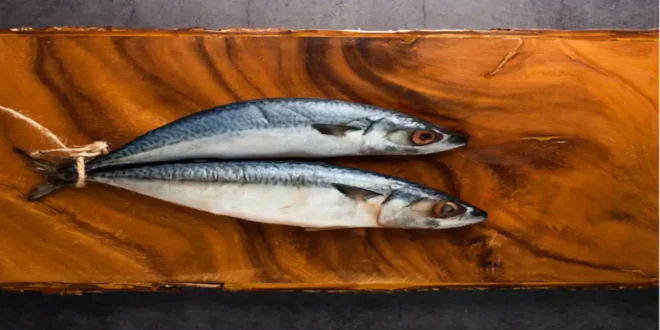Introduction to wahoo fish
The wahoo fish, known scientifically as Acanthocybium solandri, is a remarkable species that captivates fishermen and seafood enthusiasts alike. Renowned for its incredible speed, striking appearance, and culinary excellence, the wahoo holds a special place in marine ecosystems and culinary traditions around the world. This comprehensive guide delves into the biology, habitat, fishing techniques, nutritional value, and culinary uses of the wahoo fish, ensuring readers gain a holistic understanding of this extraordinary species.
1. Overview of Wahoo Fish
1.1 Scientific Classification
The wahoo fish belongs to the family Scombridae, which includes mackerels and tunas. Here’s a brief classification breakdown:
- Kingdom: Animalia
- Phylum: Chordata
- Class: Actinopterygii
- Order: Perciformes
- Family: Scombridae
- Genus: Acanthocybium
- Species: Acanthocybium solandri
1.2 Physical Characteristics
Wahoo are known for their elongated, streamlined bodies that enable them to reach speeds of up to 60 mph (97 km/h). Here are some notable physical features:
- Color: They have a dark blue or bluish-green back with silver sides and a distinct pattern of vertical stripes. This coloration helps them blend into the ocean depths while hunting.
- Size: Wahoo can grow quite large, with some individuals exceeding 8 feet (2.4 meters) in length and weighing over 180 pounds (82 kg). However, the average size caught is between 20 and 50 pounds (9 to 23 kg).
- Teeth: Wahoo have sharp, fang-like teeth that are ideal for catching slippery prey.
1.3 Behavior and Habitat
Wahoo are pelagic fish, meaning they inhabit the open ocean rather than coastal areas or the sea floor. They are highly migratory and often found in tropical and subtropical waters around the world. Key aspects of their behavior include:
- Feeding Habits: Wahoo primarily feed on smaller fish, including sardines, mackerels, and flying fish. They are known for their aggressive hunting techniques and exceptional speed, allowing them to ambush prey.
- Social Structure: While wahoo are generally solitary, they can occasionally be found in small groups, especially during spawning.
2. Habitat of Wahoo Fish
Wahoo thrive in warm ocean waters, typically between 70°F to 85°F (21°C to 29°C). Their habitat includes:
- Geographic Range: Wahoo are distributed in tropical and subtropical oceans, including the Atlantic, Pacific, and Indian Oceans. Notable fishing locations include the Caribbean Sea, Gulf of Mexico, and various Pacific islands.
- Depth Preferences: They are often found at depths ranging from the surface to about 150 feet (46 meters), where they can easily access schools of prey.
3. Fishing for Wahoo
Fishing for wahoo can be an exhilarating experience due to their speed and fighting ability. Here are some effective techniques and tips for catching wahoo:

3.1 Best Time to Fish for Wahoo
The ideal time for wahoo fishing varies by location, but they are generally more abundant during warmer months. In many regions, the best fishing is found during the spring and summer months, particularly around the following times:
- Morning and Late Afternoon: Wahoo are often more active during these times, making them easier to catch.
- Full Moon Phases: The periods around full moons can enhance wahoo feeding activity, leading to better catch rates.
3.2 Equipment and Tackle
When targeting wahoo, the right gear is essential. Here are some recommendations:
- Rod and Reel: A sturdy rod with a high-speed reel is necessary to handle the power and speed of wahoo. Many anglers opt for a conventional reel with a drag system capable of handling at least 30 to 50 pounds (13 to 23 kg) of drag.
- Line: Use a braided line with a test strength of at least 50 pounds (23 kg) to prevent breakage during the fight.
- Leader: A wire leader is crucial to prevent the sharp teeth of wahoo from cutting the line.
3.3 Bait and Lures
Wahoo can be caught using various baits and lures:
- Live Bait: Live fish such as ballyhoo or small mackerels are particularly effective.
- Artificial Lures: High-speed trolling lures, such as skirted jigs and diving plugs, can entice wahoo. Look for brightly colored lures that mimic the appearance of their natural prey.
3.4 Techniques
Some effective fishing techniques for wahoo include:
- Trolling: This is one of the most popular methods for catching wahoo. Trolling at high speeds (up to 10 knots) with the right lures can trigger aggressive strikes.
- Casting: Anglers can also cast jigs or lures near schools of baitfish where wahoo are likely to be hunting.
4. Nutritional Value of Wahoo Fish
Wahoo is not only prized for its flavor but also for its nutritional benefits. Here’s a breakdown of its nutritional profile:
4.1 Macronutrients
A typical 3-ounce (85 g) serving of cooked wahoo contains:
- Calories: Approximately 120
- Protein: About 24 grams
- Fat: Approximately 2 grams
- Carbohydrates: 0 grams
4.2 Vitamins and Minerals
Wahoo is a rich source of essential vitamins and minerals, including:
- Omega-3 Fatty Acids: These healthy fats are known for their heart health benefits.
- Vitamin B12: Crucial for nerve function and the production of DNA and red blood cells.
- Selenium: An important antioxidant that helps protect cells from damage.
4.3 Health Benefits
Incorporating wahoo into your diet can offer several health benefits:
- Heart Health: The omega-3 fatty acids in wahoo can help reduce inflammation and lower the risk of heart disease.
- Muscle Growth: High protein content makes wahoo an excellent choice for muscle repair and growth.
- Weight Management: Wahoo is low in calories and fat, making it a healthy option for those looking to maintain or lose weight.
5. Culinary Uses of Wahoo
Wahoo is highly regarded for its firm, flaky texture and mild, sweet flavor, making it a versatile ingredient in various dishes. Here are some popular culinary uses:
5.1 Cooking Methods
Wahoo can be prepared using various cooking methods, including:
- Grilling: Grilled wahoo steaks are a favorite, often marinated to enhance flavor.
- Baking: Baking wahoo fillets with herbs and spices results in a delicious, healthy meal.
- Searing: A quick sear in a hot pan can create a beautiful crust while keeping the inside moist and tender.
5.2 Popular Recipes
Here are a couple of popular recipes featuring wahoo:
Grilled Wahoo Tacos
Ingredients:
- 1 pound wahoo fillets
- 2 tablespoons olive oil
- 1 teaspoon chili powder
- 1 teaspoon cumin
- Salt and pepper to taste
- Corn tortillas
- Fresh toppings: avocado, cilantro, lime wedges
Instructions:
- Preheat the grill to medium-high heat.
- In a bowl, mix olive oil, chili powder, cumin, salt, and pepper.
- Brush the mixture onto the wahoo fillets.
- Grill the fillets for 4-5 minutes per side until cooked through.
- Flake the fish and serve in corn tortillas with fresh toppings.
Wahoo Ceviche
Ingredients:
- 1 pound fresh wahoo, diced
- Juice of 4 limes
- 1 small red onion, finely chopped
- 1 jalapeño, diced
- Fresh cilantro, chopped
- Salt to taste
Instructions:
- In a bowl, combine diced wahoo and lime juice. Let it marinate for 15 minutes.
- Add red onion, jalapeño, cilantro, and salt. Mix well.
- Serve chilled as an appetizer or light meal.
5.3 Sustainability Considerations
When consuming wahoo, it’s essential to consider sustainability. Overfishing can threaten wahoo populations, so choose seafood that is sustainably sourced. Look for certifications such as the Marine Stewardship Council (MSC) or check local fishing regulations.
6. Conclusion
The wahoo fish is a fascinating species that captivates anglers and seafood lovers with its speed, beauty, and culinary appeal. Understanding its biology, habitat, and fishing techniques enhances the experience of catching and preparing this remarkable fish. Whether grilled, baked, or served as ceviche, wahoo offers a delicious and nutritious addition to any meal. By promoting sustainable fishing practices, we can ensure that future generations can continue to enjoy this extraordinary fish.
7. Additional Resources
For those looking to learn more about wahoo fish or improve their fishing techniques, consider exploring the following resources:
- Fishing Magazines and Journals: Publications dedicated to fishing often feature articles on specific species, techniques, and local hotspots.
- Online Fishing Forums: Engage with fellow anglers to share tips and experiences related to wahoo fishing.
- Cooking Websites and Blogs: Find a variety of recipes and cooking tips to make the most of your wahoo catch.
By delving into the world of wahoo fish, you not only gain insight into this magnificent species but also enrich your culinary adventures. Happy fishing and cooking!
Frequently Asked Questions (FAQs)
What is the best time of year to catch wahoo fish?
The prime season for catching wahoo varies by location but generally peaks during the warmer months, particularly in spring and summer. Fishing is often most successful in the early morning and late afternoon, especially during full moon phases when wahoo tend to feed more actively.
How do you identify a wahoo fish?
Wahoo can be identified by their elongated, streamlined bodies and distinctive coloration. They typically have a dark blue or bluish-green back, silver sides, and vertical stripes. Their sharp, fang-like teeth and large dorsal fins also set them apart from other fish species in the ocean.
What types of bait work best for wahoo fishing?
When targeting wahoo, live bait such as ballyhoo or small mackerels is highly effective. Additionally, using brightly colored artificial lures, including skirted jigs and diving plugs, can entice these fast swimmers due to their aggressive hunting behavior.
What cooking methods are recommended for wahoo?
Wahoo is versatile and can be prepared using various methods, including grilling, baking, and searing. Grilled wahoo steaks are particularly popular, often marinated to enhance flavor. Quick cooking methods help preserve the fish’s moist and flaky texture.
Is wahoo fish healthy to eat?
Yes, wahoo is considered a healthy option due to its low calorie and fat content, along with its high protein levels. It is also rich in omega-3 fatty acids, which are beneficial for heart health, making it a nutritious addition to a balanced diet.
How can I ensure that the wahoo I buy is sustainably sourced?
To ensure sustainability when purchasing wahoo, look for seafood that has been certified by organizations like the Marine Stewardship Council (MSC). Additionally, checking local fishing regulations and supporting vendors who prioritize sustainable practices can help protect wahoo populations for future generations.
READ ALSO: The Iron Man Helmet: A Comprehensive Exploration of Technology, Design, and Cultural Impact
 Touch Blog
Touch Blog



